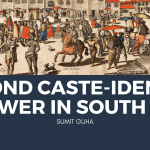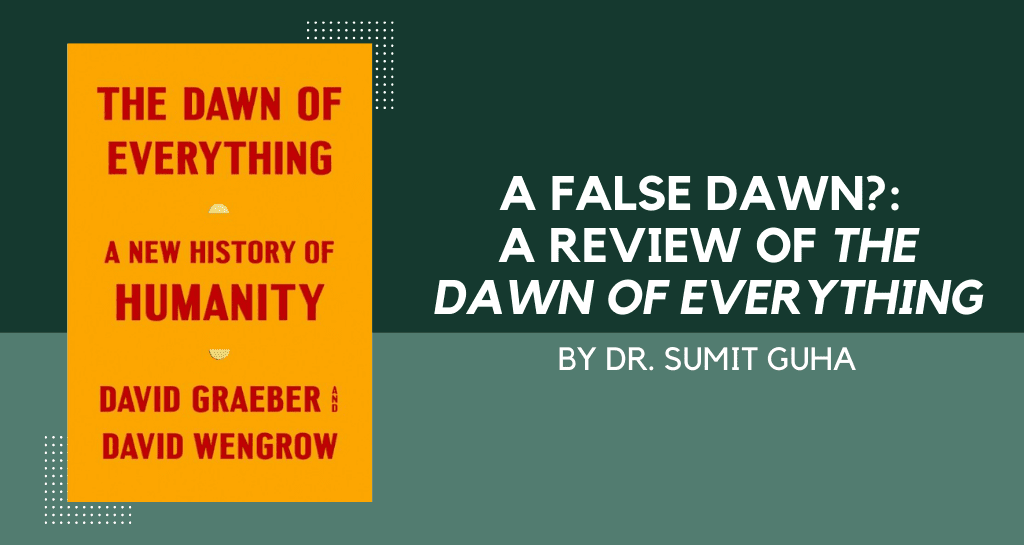
As its title suggests, The Dawn of Everything is an ambitious book. The authors, David Graeber and David Wengrow, (one whom passed away while the book was in press) survey the whole past life of biologically modern humans in an effort to broaden the ambit of modern social thought. They aim to thereby open up the possibility of a more progressive future for humankind. The book is therefore at once a critique of Western thought, a manifesto, a work of social theory, an academic polemic and many other things. It is also often written with an arch humor. Thus chapter headings consciously echo those of the nineteenth century novel.
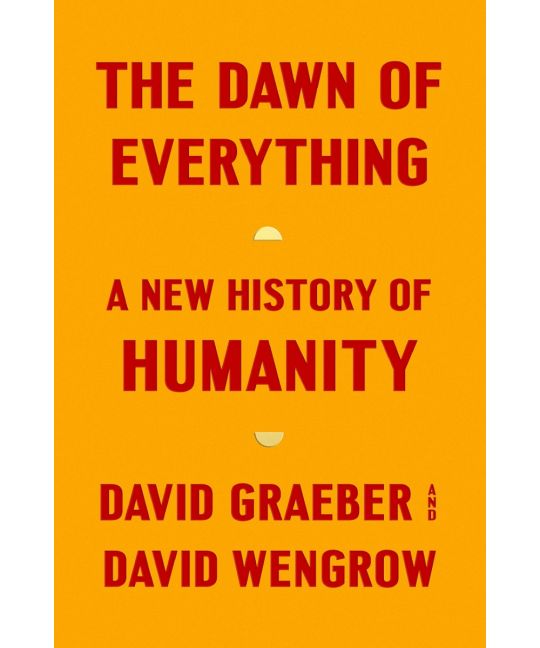
But The Dawn of Everything has a serious purpose. It presents itself as a critical alternative to contemporary ‘big history’ as found in, for example, in the work of Jared Diamond, Steven Pinker and others. It is also a trenchant critique of the standard issue “Western Civ” undergraduate survey textbooks of the 1960s or 1970s. This critique is a running thread through the entire work. The book thereby performs a valuable task in transmitting important new ideas to a mass audience while countering glib generalizations about human social organization, ‘hard-wired’ attitudes to sex, etc. current in the media and in pop psychology. Historians, archeologists and anthropologists have been developing such critiques for several decades. But they have worked too often as ‘lone scholars sniping from the walls/ Of learned periodicals…’ (W.H. Auden). I am fairly certain that their works have never been on the New York Times’ best-sellers list as The Dawn currently is. That by itself is a valuable contribution to public understanding. It is an important pinprick to overblown cliometric models and ‘Just So Stories’ about the Rise of the West that have sold millions of copies or won Nobel prizes in their day.
But despite a breeziness that makes for easy reading, The Dawn is not an easy book to review even with the aid of colleagues[1] (who bear no responsibility for anything in this review!) The difficulty stems not only from its length: 500 pages of text and 200 of references (in the hard copy). It also contains several different books and genres intermingled within it. I will try to untangle these themes and analyze them in sequence.
Alternative history of proto-humans
The first theme is an alternative history of the archaeology of the genus homo, beginning from its African emergence some two million years ago. That is followed by a focus on its only surviving species, sapiens, the one to which I and all readers of this review belong. They report the now accepted idea of the early diversity of hominin species in Africa was followed by the development of different, but also now extinct sub-species beyond the African continent. They mention, but do not explore the fact that all these other varieties of ‘homo’ somehow became extinct leaving modern humans. They are now the only extant hominid species anywhere on earth. Graeber and Wengrow, otherwise ready to speculate, do not ask why this happened. Extinction of one species soon after the arrival of another can occur by direct predation or by competitive exclusion from the only available niches. The latter seems more likely, though members of homo sapiens have, from time to time, also directly preyed on and eaten each other. Our ancient forebears are unlikely to have been more scrupulous with other hominins. But that was probably not the major mechanism of extinction. Competitive exclusion is likelier. It implies scarcity. The path to extinction would go by way of malnutrition and reproductive failure. This is therefore contrary to any idea of a generalized ‘primitive affluence’. These ecological explanations for the disappearance of an initial diversity are not explored.
The views of both popular and academic exponents of social evolution as driven by scarcity and competition are however flattened out and frequently attributed to an unnamed ‘anyone’ who thinks about human history. If this anonymous ‘anyone’ does not believe in a Rousseauvian primitive egalitarian simplicity, then they have chosen to believe in a Hobbesian world where individual humans in a state of nature engage in violent predation upon each other unless restrained by the strong arm of the despotic state. The state, Graber and Wengrow argue did not emerge as necessary consequence of agriculture. Agriculture had existed on a smaller or larger scale for thousands of years without giving rise to anything like a state. There was, as they say “no ‘original’ form of human society…” This is a very defensible argument already made several times in the past few decades.
Plants and animals changed the people who ate them
The next important theme they address is the role of agriculture in shaping human society. They suggest on a very limited basis that agriculture began as recreation and was periodically abandoned by choice in order to protect leisure and freedom. The academic commonsense derided here is that agrarian settlement led ineluctably to private property, the patriarchal family and the state. Instead, Graeber and Wengrow argue that agriculture was often rejected by those well able to farm who however chose not to do so. They point to societies that settled down to agriculture – sometimes for centuries – but then abandoned it to return to either a pastoral nomadic or foraging life. They are right that reluctance to fully adopt farming could arise from reluctance to accept subjection. Karl Wittfogel wrote of Inner Asia that sometimes “women, children and war captives tilled some few fields near a campsite, but “the dominant members of the tribe, the adult males stubbornly refused to abandon their hunting, fishing or herding activities.” Leisure and freedom were not open to everyone. Wittfogel continued that the “many primitive peoples who endured lean years and even long periods of famine without making the crucial changeover to agriculture demonstrate the immense attraction of nonmaterial values, when increased material security can be attained only at the price of political, economic, and cultural submission.”
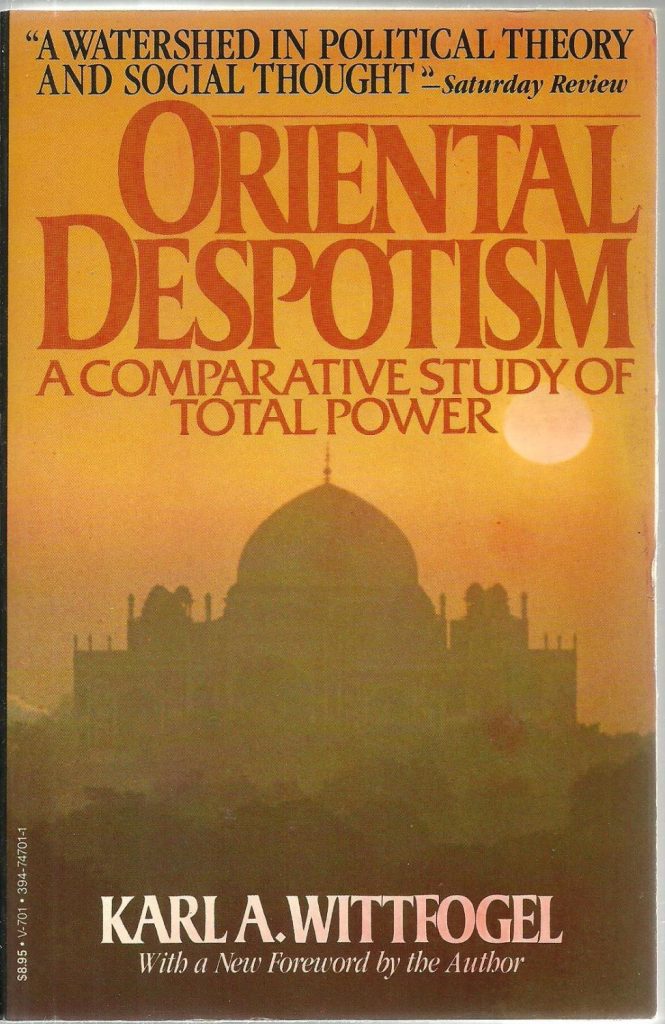
But the rejection of agriculture cannot always be explained by Graeber and Wengrow’s preferred explanation of a human choice to live free. They do not explore the low productivity of early agriculture or its vulnerability to attack as a reason for periodic abandonment. In arid areas, protracted drought – combined perhaps with attacks from other starving peoples could drive farming communities into extinction. And so, as Debuys says, abandonment of fixed settlements “is a theme shared by all the [American] Southwest’s ancient civilizations.” In medieval Europe, seed-yield ratios for the principal cereals were barely three or four-fold: that means that one-third or one-fourth of an average harvest had to be kept for seed. Farming was thus extremely vulnerable to small changes in yield. Peasants driven by hunger to eat their seed-corn would be faced with the looming choice of starving to death, wandering away to gather wild foods or seeking life as debt-slaves in some hierarchical system that still had supluses. In North-Western Europe, only the ‘agricultural revolution’ of the eighteenth century broke through the medieval productivity ceiling and produced secure surpluses that allowed the enlargement of cities and manufacture.
History of ideas
Complementing The Dawn’s critique of ‘Rise of the West’ narrative is a new history of ideas that seeks the origins of major intellectual breakthroughs that supposedly constitute the foundations of the American republic. These, they argue could not be conceived by European theorists until their thought was pollinated by Native American thought. The Wendat statesman Kandiaronk was the true begetter of The Spirit of the Laws. The authors ignore that many New England settlers came from precisely the Protestant confessions where ideas of universal human rights and even the equitable sharing of land had bubbled up during the English Revolution. Christopher Hill exhaustively analyzed these in a famous book titled The World Turned Upside Down.
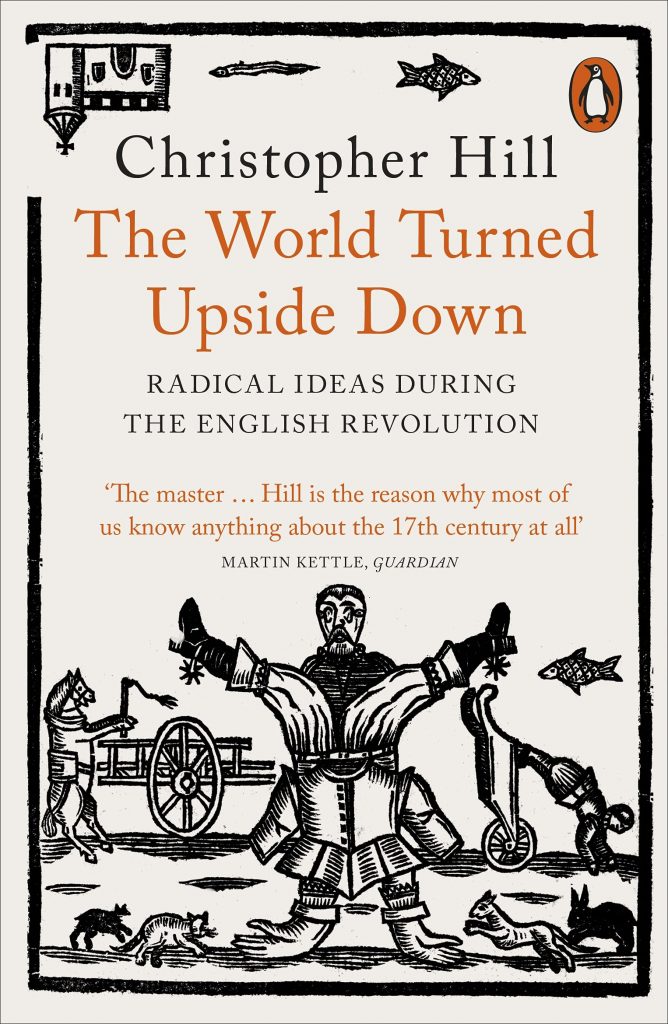
Nor were early Europeans the Eurocentric caricatures that they appear as in this book. Eighteenth century Enlightenment thinkers like Voltaire were certainly enthused by Jesuit reports from China, as Graeber and Wengrow mention. But this only followed on millennial fascination with India. More than 50 years ago, Gottschalk and Lach’s textbook pointed to an ancient and enduring Greco-Roman fascination with Asia and the ascription of many virtues to its inhabitants. This continued through the Renaissance. For Rabelais (d.1553) “the Brahmans of India [were] exemplary wisemen (sic).” The Tudor Lord Chancellor Sir Thomas More (executed by Henry VIII in 1535) cited an old Hellenic tradition that Alexander had consulted the Brahmans of Taxila because they lived in a perfect commonwealth guided by virtue. Even after classical times, the search for Oriental wisdom that Trautmann calls Indophilia permeated early colonial rule in India. Graeber and Wengrow denounce Eurocentrism but themselves rarely look at any history beyond the two sides of the Atlantic.
It was, according to the book, only after having been schooled by the Native Americans that the French intelligentsia were, for the first time, able to ask questions about the origin and fairness of inequality. The indigenous critique had been “a shock to the system, revealing possibilities for human emancipation” that Enlightenment thinkers were only now capable of exploring. Indigenous North American men and women by contrast, had long debated the values that should guide human societies. They had already rejected the idea of rebuilding of centralized, authoritarian models such as those of the Classic Maya and Cahokian. The possibility that the disintegration of these large societies resulted from famine or environmental degradation rather human volition is not seriously entertained. Graeber and Wengrow admit that the exact causes of the abandonment of the great centers of these and other cultures is unknown. But they argue that what remained was a deep North American tradition of political thought and debate introduced to the French by men like Kandiaronk. After experimenting with divine kingship many (though not all) Native Americans had ended up prizing personal freedom above all. These free peoples were consequently horrified by the political life of the French. Their critiques of the slavish subjects of Louis XIV or XV revolutionized the ideas of Montesquieu and Rousseau. Ultimately, these thoughts were very imperfectly adopted by the rebellious colonists on the Atlantic coast of America who have claimed the credit for them ever after.
It is very likely that the Native American peoples had traditions of oratory and debate as a preliminary to collective decision-making. That has been argued at least since Schoolcraft in 1847. They likely found French military and civil discipline strange and distasteful. Warrior democracy however, is a recurrent historical phenomenon, often appearing alongside, or in response to, states. It would therefore be present in the North American woodlands too. But Tacitus’ Germans (c.100 CE) similarly gathered in tribal assemblies for major decisions. “When the multitude think proper, they sit down armed. Silence is proclaimed by the priests, who have on these occasions the right of keeping order. Then the king or the chief, according to age, birth, distinction in war, or eloquence, is heard, more because he has influence to persuade than because he has power to command. If his sentiments displease them, they reject them with murmurs; if they are satisfied, they brandish their spears. The most complimentary form of assent is to express approbation with their spears.” The contemporary Pakhtun or Pathan jirga assembly is, mutatis mutandis, another manifestation of the same phenomenon. In all such settings, polished oratory will emerge as a necessary element of leadership.
The other side of tribal life is inter-tribal violence. This is both assumed and glossed over in The Dawn. Native American wars were, Graeber and-Wengrow assure us, ‘mourning wars’ waged only to assuage the grief of relatives of those slain in previous episodes in the cycle of vendettas. They do not consider that the cycle could have continued endlessly. The Germanic tribes figured out a system of compensation for blood (wergild) exactly to prevent such conflict from escalating. Nor can the category of ‘mourning war’ explain the protracted conflict over beaver hunting grounds that resulted in the near-extinction of Kandiaronk’s own Wendat people. John Richards has, however described how “cultural inhibitions” against over-hunting failed to compete with the allure of European trade goods. “Algonkian material culture became dependent on French trade goods. Iron tools and kettles replaced those of stone, wood, bark, and bone. Harquebuses and pistols replaced bows and arrows in hunting and warfare… By 1649, the terror stricken Hurons, weakened by their inability to grow food because of raids, burnt their own villages and dispersed as refugees…”
Graeber and Wengrow do not explore why the introduction of European trade goods should immediately result in wars for control of the best beaver hunting grounds. The process is casually mentioned in the throwaway phrase ‘notorious Beaver Wars’. These were however, ethnocidal conflicts between indigenous peoples that ended in the disappearance of some of them. They were waged so that the winners could secure a monopoly over the supply of furs to the Europeans in exchange for valuable objects that the native peoples could not make. The logic of maximizing market returns by force was therefore intuitively grasped by Kandiaronk’s contemporaries. Indeed, The Dawn states that this monopolistic strategy was known earlier. The “Attiwandaronk appear to have been monopolizing trade to the south and through it to the Chesapeake Bay and beyond…” until 1600. It is certainly true that the wide distribution of material objects across entire continents in prehistoric time does not automatically signal the presence of commodity trade. But violent monopolization of markets with the consequent monopoly profits for the successful aggressor indicates either prior knowledge of or a quick adoption of the worst aspects of capitalism.
A Speculative History of Anthropology
A more academic field is the history of anthropological thought. Graeber and Wengrow read an idiosyncratic selection of anthropologists – some cited approvingly and some critically – to support the idea that many human societies have debated their governance practices and have consciously changed them from time to time. They also draw significant ideas later applied to processual archaeology, such as seasonal alternation of habitats and lifeways. But they suggest that even later ‘folk’ rituals kept historical memories of seasons of freedom alive. They therefore revive nineteenth century readings of myths and folk-rituals as relics of past societies. Not surprisingly, saturnalias and carnivals, and similar instances of the ‘world turned upside down’ feature in this book. Initially, they are deprecated as ‘folk egalitarianism’ of no great significance. But the endnotes sometimes take a more sympathetic view that carnivals preserved ancient seasonal alternations of societal organization. They also propose that myths can be ‘read’ as reflecting past historical processes.
This is indeed what Edwardian armchair theorists such as Sir James Frazer, author of the famous (or infamous) Golden Bough proposed. He receives a sympathetic reading in the book. So do structural theorists like Claude Lévi-Strauss, who famously dipped his toes in field work only once before moving to the comfort of the seminar room. Between them, these two provide a significant part of the conceptual frame of The Dawn. But the book ignores Lévi-Strauss’ comments about the desperate dry season hunger of the Nambikwara, even though its authors otherwise borrow copiously from his work. On the other hand, the ethnographic model developed on vacation trips among the Nambikwara by Claude Lévi-Strauss is taken as accurate. He in fact confessed in a footnote that he could not speak the Nambikwara language, nor could he secure the services of an interpreter. Instead, he was mainly reporting conclusions from conversations conducted in mime and a mixture of indigenous words with French and Portuguese terms. In fact, Lévi-Strauss’ field work has been shown to be shoddy and much of his description a projection of his own theories in separate research by Aspelin and Price near fifty years ago.
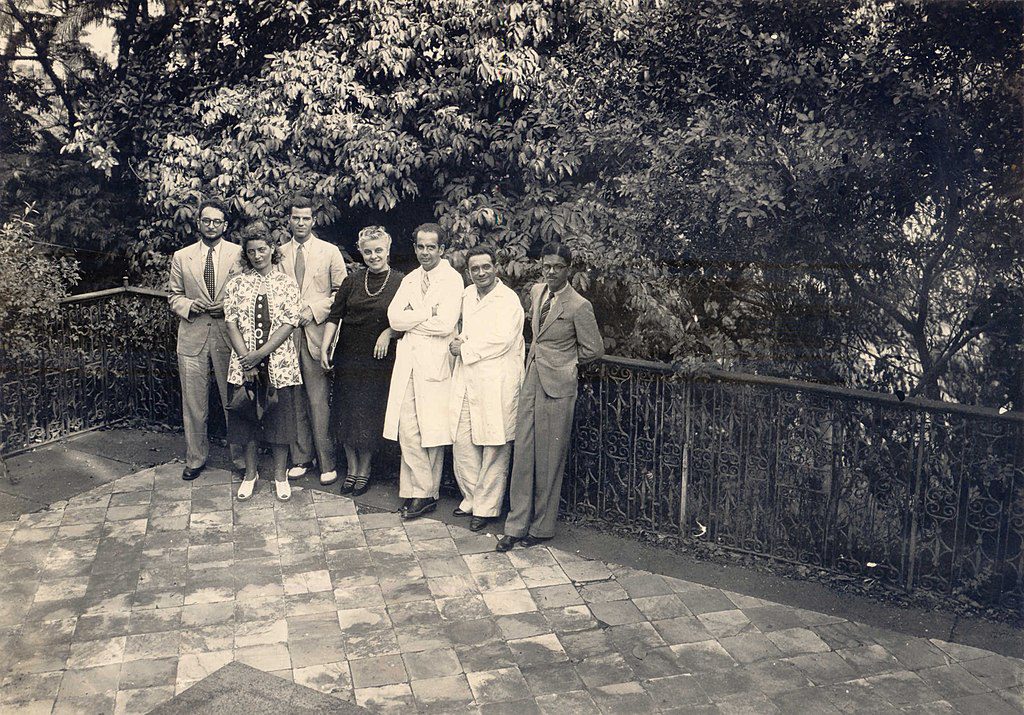
Graeber and Wengrow are also strongly sympathetic to the nineteenth century theorists from whom they derive their ideas of primeval matriarchy and common property. Sir Henry Maine’s idea that Germanic peoples originally owned land in common is assessed favorably. But his contemporaries, Marx and Engels find scant mention: this is obviously because they were both evolutionist and determinist. They were determined to find scientific socialism and abhorred utopian thinking. For Engels, matriarchy and primitive communism have both existed, but only in ancient times, the childhood of mankind. The program of voluntarism that propounded in The Dawn would be alien to Classical Marxism.
Given its continuous emphasis on earlier human society as ever open to refashioning, The Dawn has to argue that we can only explain radically different societal organizations in terms of people’s conscious organizational choices. On the North American Pacific coast, each society performed “a mirror image of the other.” Native Americans who prized hierarchy even created indigenous slave societies and thereby demarcated themselves from those that valued freedom. Why the slaves did not flee to the latter is left unexplained.

The process of separation is what the authors call ‘schismogenesis’, the seemingly spontaneous division of human societies into ‘culture areas’. That phenomenon has however long been studied in anthropology under the simpler title ‘boundary-making’ processes. Fredrik Barth wrote a half-century ago that it was control of the boundary that mattered. It was “the ethnic boundary that defines the group, not the cultural stuff that it encloses.” Boundaries require policing of entry and assignment of status. Both imply imbalances in coercive power. Barth described how specific gate-keeping mechanisms had permitted the expansion of Baluch communities at the expense of Pakhtun ones for example. Weak Pakhtun family groups or individuals could be accommodated as dependents or clients. As a result, Baluch societies were strongly authoritarian and easily formed kingdoms when placed as overlords over an agrarian population. But Barth and many others also pointed to the formation of tribes out of simpler societies as a reaction to the encroachment of kingdoms. Tribal entities could both destroy and build kingdoms. The lovers of freedom do not always protect the freedom of others.
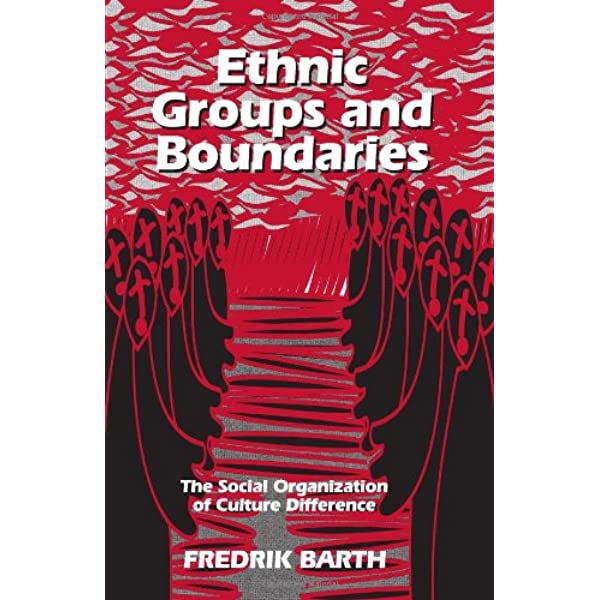
The program
A key idea that informs the entire work is the notion of a manifesto – and implicitly – a program. This asks readers to widen their imaginations and dream again of a better, more just social order to replace the fraying neo-liberal consensus that rules on both sides of the Atlantic today. It is especially aimed at ‘There is no alternative’ (TINA) – a phrase made famous by the British Prime Minister Margaret Thatcher in the 1980s. The Dawn argues that human groups have developed many alternatives through recent history. Readers should not succumb to fatalism. Humanity had found the answer in the past but has gone astray in the present, they declared in the New York Times.
Despite the title of the op-ed, the book begins by clearing away the idea that equality – often understood as equality in income or wealth – should be the highest value. They see this as a red herring, declaring that inequality is such a slippery term, and that “egalitarian society” can have no definite meaning. They instead propose freedom as the best principle for human societies, since free peoples can invent and change their institutions. They assert that “three primordial freedoms, those which for most of human history were simply assumed: the freedom to move, the freedom to disobey and the freedom to create or transform social relationships.” Their own vision of true freedom is suggested by what they attribute to indigenous peoples. “What we can now see is that the first two freedoms – to relocate, and to disobey commands – often acted as a kind of scaffolding for the third, more creative one.”
But the necessary conditions for these are left unexamined. Take relocation: after the democrats deserted the Cahokian culture, they declare, “hundreds of miles of river valleys around it, lay entirely devoid of human habitation.” Even if the Native Americans did this by choice (and not owing to population collapse or climatic insecurity) such abandonment is a luxury that the near eight billion humans on earth today cannot afford.
Unexplored themes
As I have mentioned, neither the English Levelers and Diggers of the 1650s or the riot of alternative ideas in the first decade of the French Revolution are addressed. Also neglected is the actual outcome of both. These were a military dictatorship followed by restoration of the previous dynasty in England and a series of sanguinary short-lived dictatorships (each claiming the embody Rousseau’s Universal Will) in France. That revolution was followed by the enlightened but endlessly bellicose despotism of Napoleon. Instead of considering serious historical conservatives like Jacob Talmon, Graeber and Wengrow simply attack anonymous straw men – the “many conservatives” who held Rousseau personally responsible for the guillotine.
The second unexplored problem is that of the coordination of economic activity in complex – and nowadays, global organizations. The goods moved today are now vital inputs of farming or luxuries become necessities, like smartphones, tea or cocoa. They also include vital production inputs such as fuel and fertilizer. The channels of commerce – undersea cables, harbors, communications satellites, airports, railroads, highways, pipelines – have been constructed through decades with vast expenditures of money and labor. Graeber and Wengrow do not value this physical infrastructure nor prize the social systems that created it. For them an always available open exit is the essential part of freedom. That choice – open to be made singly or en masse at any time – would preclude the building of any durable infrastructure. No big ships or costly harbors or railroads; no oil wells or pipelines; no Congolese mines for cobalt or Chilean ones for lithium; nor will there be Chinese factories making millions of electric cars or smartphones. No large scale transfers of food, whether as aid or trade. Kandiaronk supposedly declared that adopting his free and simple way of life would merely cause the death of “nobles, merchants and priests.”
Today, many others would also die on the streets, including university professors too…
Disregarding academic protocols
Despite denouncing ‘cherry-picking’, the book – though written by two distinguished scholars– consciously avoids the standard academic protocols of the academic world today. They carried out this project as a labor of love alongside their more routine academic publications. They therefore felt able to disregard some of the conventions when necessary. They declare that if they had actively cited and refuted specialists in different fields that they traverse during the course of this wide-ranging survey they would have written a book or two or three times as long as the current one.
Instead, they have mainly mapped what they believe happened and pointed out flaws in others’ arguments only where these reflected more widespread misconceptions. Cavalier disregard allows them to introduce their own surmises and thus give birth to their own family of misconceptions. As it is, “imagine” is one of the most widely used verbs in this book. The limits to others’ imagination are frequently invoked as evidence. For example, “it is hard to imagine” that Montesquieu did not learn of Native American political ideas from the delegations that came to Paris. In general, the authors consciously accept or massage the evidence for arguments that they support, while criticizing, deriding – or more often, ignoring, those they dislike. Equally, there is occasionally presentation of established academic findings with a ‘Gee-whiz, whoda thunk it!’ air reminiscent of that triumph of American marketing, Ripley’s Believe it or Not.
But their disregard of established protocols goes further more than once. Take the claim that contemporary American office workers work more hours “overall” than medieval European serfs did. This turns out to be based on the sociologist Juliet Schor’s book, cited without page number. But while Graeber andWengrow refer to ‘serfs’ even their incomplete endnote refers to “peasants”, Schor actually refers to adult male laborers (The Dawn n.17, Chapter 4; Schor, 1991: 45). Not all male peasants were serfs: and outdoor work in the fields or mines demands considerable effort that cannot be long-sustained. Nor does the weather allow it. It is therefore not comparable to contemporary American machine-supported and indoor work. Having made a claim unsupported by even their own shaky reference, Graeber and Wengrow then cite it as a proven fact and even ‘know’ what the “average medieval baron” would have considered a reasonable demand upon his serfs. Neither baron nor serf are mentioned in the source cited! This does not prevent the authors from wrapping themselves in the authority of the Social Sciences when needed and parading hundreds of endnotes to awe the reader.
‘Heterarchy’ or the Separation of Powers
The Dawn is also a critique and re-theorization of an old debate in the social sciences: the one around the emergence of the “state”. As Morton Fried wrote fifty years ago, the question has long been a favorite one. “Why have people permitted themselves to be seduced, bilked, murphied or otherwise conned into relinquishing a condition of egalitarianism for one of inequality?” The major target of this critique is the widespread idea that the adoption of sedentary agriculture led inevitably to economic differentiation, urbanization, autocracy and the rise of the state.
Graeber and Wengrow offer a complex idea of what is today called a state. A state, they argues, is constituted by the contingent overlap of three principles – the control of violence, plus a system of information and enforcement through bureaucracy and possession of charisma by a succession of leaders. Each of these three, they claim has separately conferred authority in various places and times. But no one of them was equivalent to the modern state: consequently the search for “the origins of the state is a fool’s errand”.
They continue that the capacity for an effective monopoly of violence had long been found in the centers of ruling power, whether in the Americas or Eurasia. It might be arbitrary and tyrannical, but its reach could not extend far from the center. The appearance of an information apparatus enlarged this range, but did so at the expense of the sovereign’s power, secluded as she or he was behind a screen of officials. Finally, another form of dominance was that embodied in a dynastic sovereign. It is connected with the heroic culture exemplified in the Homeric epics. The modern state is thus a “confluence of three political forms – sovereignty, administration and charismatic competition – that have different origins. Modern states are simply one way in which the three principles of domination happened to come together…”
The agents of history in this part of The Dawn are either humans in general or impersonal ‘forms’ that capture each other in a vaguely neo-Hegelian way. But the excavators of Catal Huyuk (Anatolia) and many other large settlements such as the Harappan cities invoked the simpler concept of ‘heterarchy’ to understand the governance of the complex systems that they uncovered. This concept appears only once in The Dawn – as an afterthought in the very last endnote in this book. That note does recognize that many of the societies reviewed favorably in the book could be termed ‘heterarchies’, meaning their governance ran along parallel, mutually balanced sources of authority. The concept is important: it represents an evolved compromise between collective governance and individual autonomy. This institutionalization of cross-cutting and independent authorities has a familiar name in the American political system. It is called the Separation of Powers and was consciously instituted by the makers of the American constitution adopted in 1790.
But the authors are clearly not admirers of the US nor of its constitution. In an implausible stretching of categories, they claim that even elected heads of state – like the President of the United States, have been selected by charisma and not true democratic choice. Modern elections they declare, are just a repetition of the old aristocratic contests for prizes, but now just re-labeled ‘democracy’. If indeed open election and charismatic dictatorship were exactly the same, we would never see military coups and authoritarian governments such as have befallen most members of today’s United Nations. And Donald J. Trump would still be in office today [2024].
Ultimately therefore, this is a stimulating but flawed book. It compels the reader to grapple with novel ideas and connects far-flung themes. It forces ideas that that usually siloed in their little scholarly niches into conversation with each other. But the reader is also forced into researching and fact-checking across many diverse fields. The process is slow and exhausting, if educative. And the book’s arguments fall apart under scrutiny. It is ultimately a repetition of a familiar literary exercise, the imagining a better world, a utopia, somewhere in the forgotten past of our species.
[1] Adam Clulow, Brian DeLay, Alan Tully and Isaac Ullah
The views and opinions expressed in this article or video are those of the individual author(s) or presenter(s) and do not necessarily reflect the policy or views of the editors at Not Even Past, the UT Department of History, the University of Texas at Austin, or the UT System Board of Regents. Not Even Past is an online public history magazine rather than a peer-reviewed academic journal. While we make efforts to ensure that factual information in articles was obtained from reliable sources, Not Even Past is not responsible for any errors or omissions.
